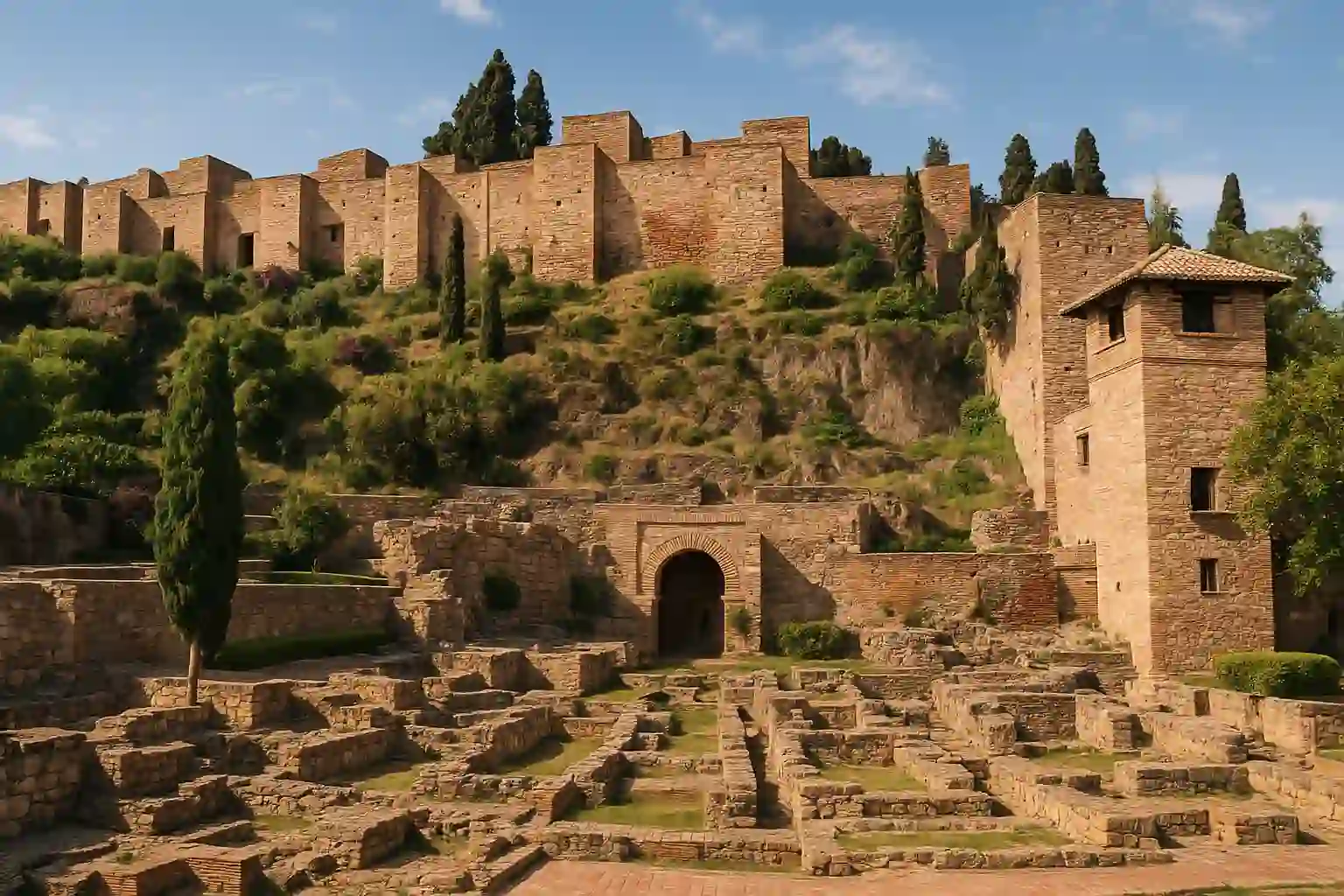Málaga Alcazaba – Entry Ticket, History & Quiet Visit Guide

Architecture and Atmosphere
The Alcazaba’s name comes from the Arabic al-qasbah, meaning “citadel.” Its double walls, defensive towers and inner palace make it one of the best-preserved Moorish fortresses in Spain. As you walk through its layered gates — from the Puerta de la Bóveda to the Puerta de los Cuartos de Granada — you move not only uphill, but back through centuries of history. Each level brings a shift: from the busy city noise below to quiet stone alleys where fountains whisper.
The design follows the Nasrid ideal later perfected in the Alhambra: water, geometry, and light as elements of peace. Patios framed by horseshoe arches open to small gardens of orange and myrtle. Water channels reflect the sky, and from the highest terrace, the sea appears framed by palm trees and battlements. Despite its military purpose, the Alcazaba feels intimate — a fortress built for reflection as much as defense.
Historic Layers
The earliest walls were raised under the Hammudid dynasty around 1057, using stones from the nearby Roman Theatre — some still visible in the lower ramparts. Later, under the Nasrid rulers of Granada, the structure expanded into a small palace with marble columns and stucco arabesques. When the Catholic Monarchs conquered Málaga in 1487, the Alcazaba became a royal residence for a time before falling into centuries of neglect.
Restoration began in the 20th century, carefully uncovering mosaics, arches, and traces of Arabic inscriptions. Today, visitors can walk through these revived spaces — an open-air archive of Andalusian art, where Roman, Moorish, and Christian epochs overlap like layers of sandstone.
Highlights Not to Miss
- Plaza de Armas · The main terrace with sweeping views of the port and cathedral.
- Torre del Homenaje · Once the watchtower of rulers, now a calm lookout over the bay.
- Patio de los Naranjos · Fragrant courtyard symbolizing paradise in Islamic architecture.
- Archaeological rooms · Display fragments of ceramics and tools found during excavations.
- Roman Theatre below · A reminder that Málaga’s story began long before the Moors arrived.
When to Visit
The Alcazaba opens most days from morning until sunset. The light changes constantly: early hours paint the stone in pale gold; late afternoons turn it amber. In summer, start before 10 a.m. or after 5 p.m. to enjoy cooler air. Spring and autumn offer ideal balance — fewer crowds and softer light for photography.
- Morning · Clear views over the Mediterranean and peaceful courtyards.
- Evening · The sun sets behind Gibralfaro, bathing the walls in orange light.
- Winter · Crisp air and quiet paths for reflection.
Entrance & Tickets
The main entrance is beside the Roman Theatre on Calle Alcazabilla, at the foot of Mount Gibralfaro. The walk is uphill but moderate, following a winding path shaded by cypress and bougainvillea. Combined tickets with the Castillo de Gibralfaro are available — ideal if you want both the fortress and panoramic views of Málaga. Booking online in advance guarantees entry and saves time at the gate.
Traveler Tips
- Wear light shoes — the cobbled slopes can be uneven.
- Bring water and a hat during summer months.
- Plan 90 minutes to explore calmly; more if you visit Gibralfaro afterward.
- Photography is allowed — morning light is best for interior courtyards.
- Don’t rush the descent: stop at the Roman Theatre and nearby cafés on Calle Alcazabilla.
The Alcazaba is a reminder that strength and beauty can coexist. Its stones have watched empires rise and fade, yet water still flows quietly through its channels. To visit is to touch Málaga’s oldest soul — not through grandeur, but through stillness.
